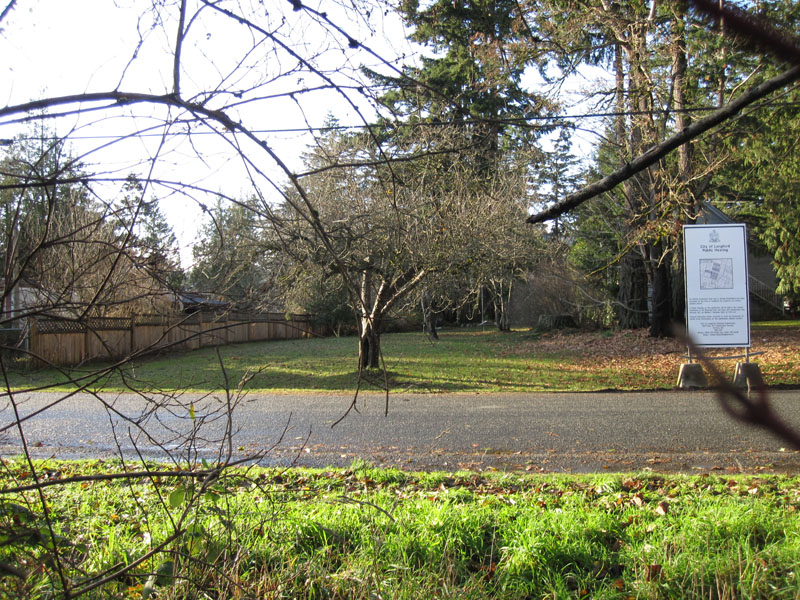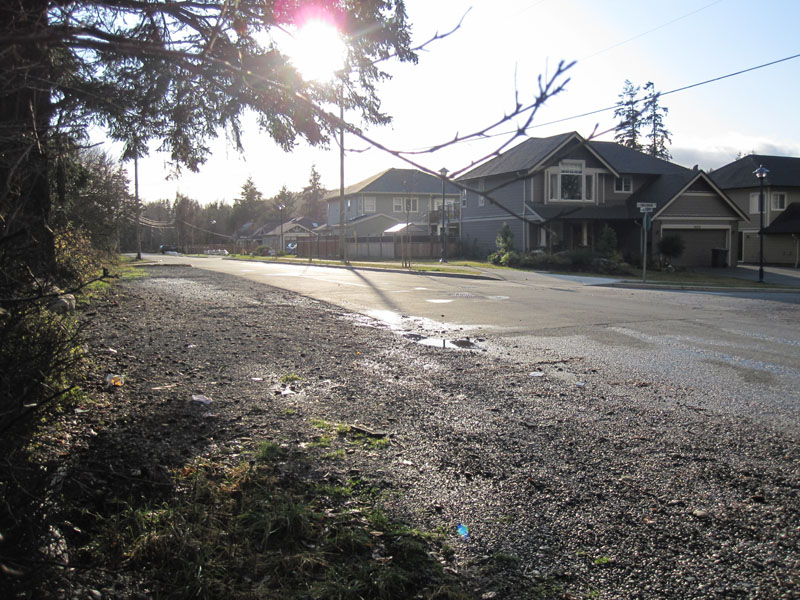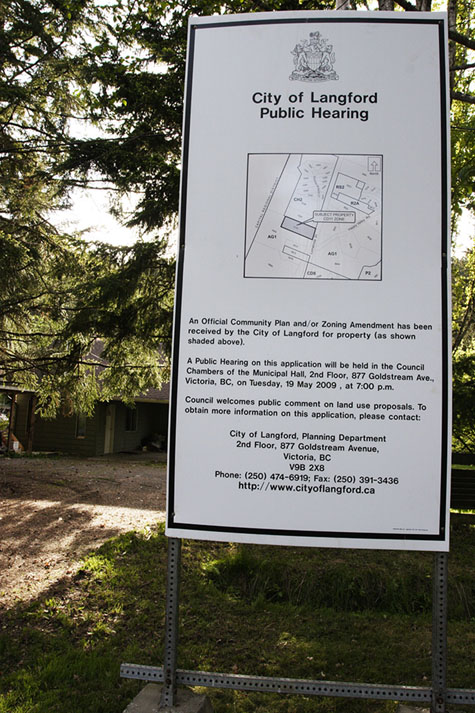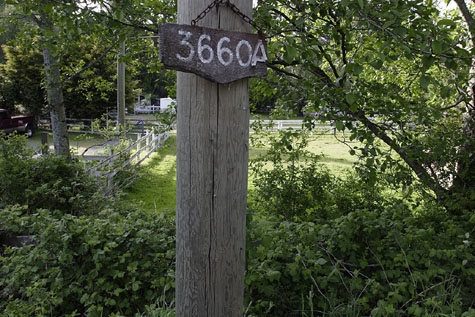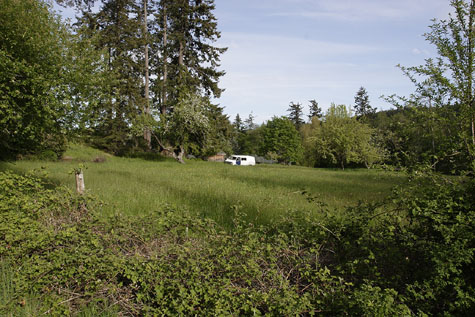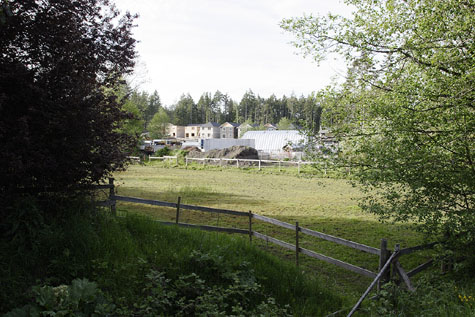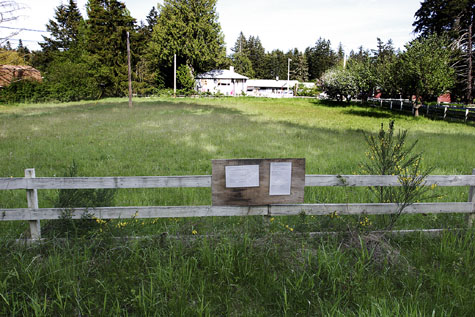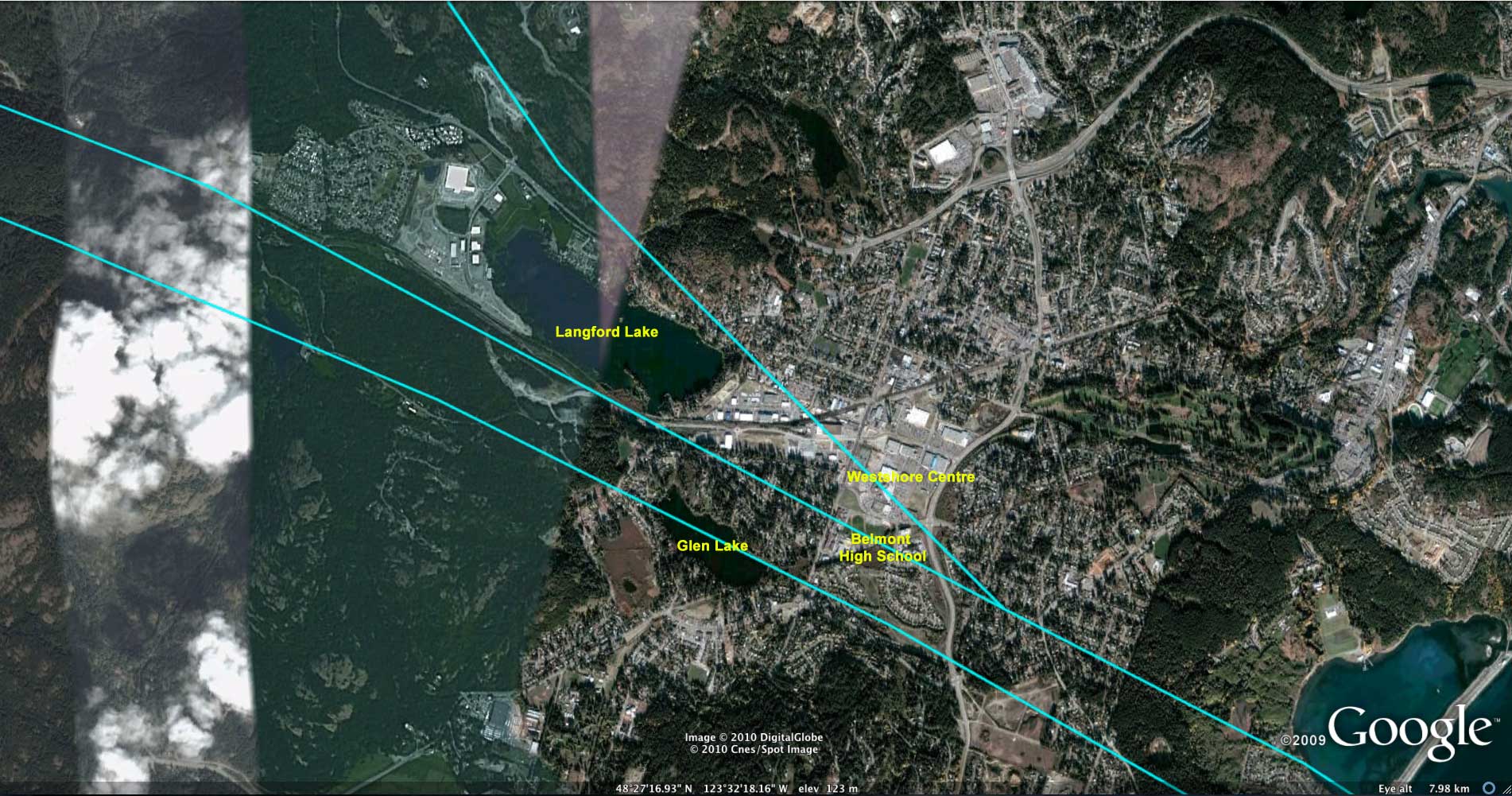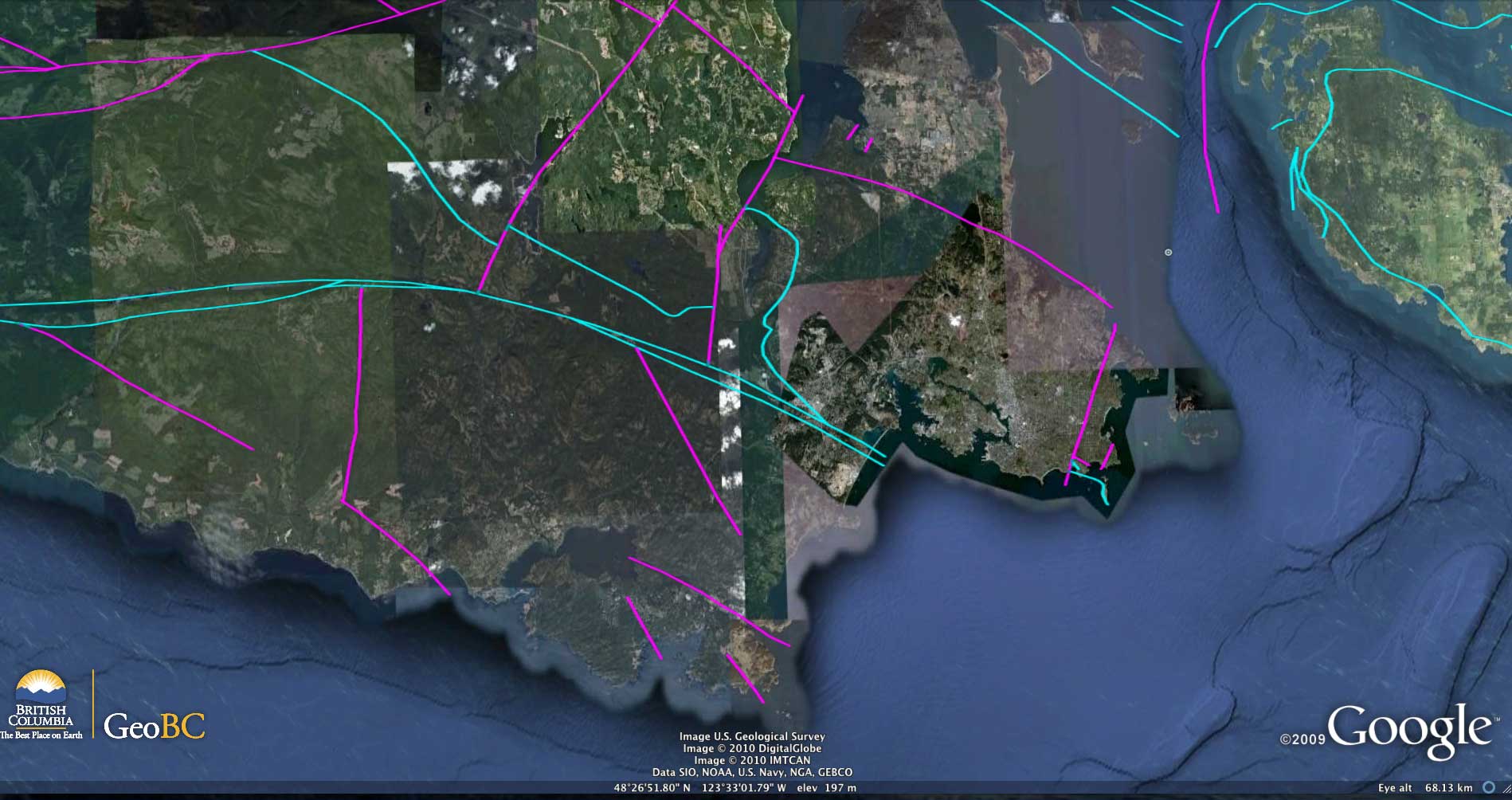Strategic Goals, Objectives and Actions
1 Goal 1. Increase community agricultural activities
Working with the community to provide a full range of agricultural and supportive uses that meet the needs and desires of the residents as well as encouraging value-added activities to support local farming initiatives are important elements in building a healthy and complete community.
The local economy, environment, and the health and well-being of the community are all positively impacted by increasing agricultural activities in the community.
1.1 Objective 1: Encourage a mix of community agricultural activities and food security initiatives.
Action Steps
Priority
1.1.1 That Council amend Langford’s Landscape Policy, Bylaw 1201. Design Guidelines, and Bylaw 500. Subdivision and Development Services Bylaw by requiring 10% of landscaping in private developments, parks and local streets to be edible plant species.
High
——————————————————————
1.1.2 That Council amend Bylaw 1201. Development Permit Guidelines by requiring new mixed-use and residential developments with density of 100 units per hectare or greater and where residents do not have access to private yards to provide a community garden that is a minimum size of 300 m• (3,229 ft•).
high
——————————————————————
1.1.3 Amend all commercial and institutional zones to permit farmer markets.
high
——————————————————————
1.1.4 Address in reports to Council for any rezoning application in South Langford where applicable, how the developer plans to promote and support local agriculture and food security initiatives.
ongoing
——————————————————————
1.1.5 Amend Langford’s Affordable Housing Parks and Amenity Contribution Policy to require as a condition of density bonussing at time of rezoning that a developer pays $600, $800 or $1500 per residential unit (depending on the location in Langford) and $500 per 3000 ft• toward the ALR Acquisition.
done
——————————————————————
1.1.6 Use funds in the ALR Acquisition Fund to purchase viable farm land in the ALR to be secured in a public trust and made available to individual farmers or groups on a lease basis.
high
——————————————————————
1.1.7 Consider including a density bonussing provision in rezoning bylaws for multi- family, commercial and/or institutional developments that can facilitate food growing or gardening in the form of green roofs, rooftop gardens, community gardens, etc.
ongoing
——————————————————————
1.1.8 Allow community gardens as permitted uses in all zones.
medium
——————————————————————
1.1.9 Designate environmentally sensitive areas as Development Permit Areas in the ALR
done
——————————————————————
1.1.10 Perform a cost-benefit analysis on the institution of farm tax exemption policies as a means to establish local farms.
low
——————————————————————
1.1.11 Provide site selection support for food processors considering locating in the community.
ongoing
——————————————————————
1.1.12 Work with local organizations to determine the feasibility of establishing a “Community-Supported Agricultural Program1” in Langford.
high
——————————————————————
1.1.13 “Community-supported agriculture began in the early 1960s in Germany, Switzerland, and Japan as a response to concerns about food safety and the urbanization of agricultural land. Groups of consumers and farmers in Europe formed cooperative partnerships to fund farming and pay the full costs of ecologically sound and socially equitable agriculture.” For more information please visit the following websites: www.wikipedia.org or www.csafarms.ca.
1.2 Objective 2. Work with local community groups to raise awareness about local food and urban agriculture.
Action Steps
Priority
1.2.1 Continue to work with Goldstream Station Market to expand the market; provide in-kind support such as closing off Bryn Maur Road (location of market) from vehicular traffic during market hours, installing and maintaining market signage and banner, providing free Trolley Service to the market and free parking, providing garbage pickup and free power, and landscaping and floral displays; and increase public awareness around local agriculture and food security initiatives.
ongoing
——————————————————————
1.2.2 Continue to provide in-kind support to the Luxton Fall Fair, Luxton Rodeo, and other community events and initiatives that build awareness around local agriculture and food security initiatives.
ongoing
——————————————————————
1.2.3 Work with partners to jointly develop and establish a region-wide branding strategy (e.g. “Locally Grown,” “Buy Local”/”Taste of the Region”).
low
——————————————————————
1.2.4 Continue to consider and support local community organizations who apply for a grant to undertake local food security projects in Langford.
ongoing
——————————————————————
1.2.5 Dedicate a page on City of Langford’s website that promotes agricultural and food security initiatives, and provides information and links to other organizations.
medium
——————————————————————
1.2.6 Partner with local organizations to build community gardens on city-owned parcels where and when appropriate through lease agreements.
medium
——————————————————————
1.2.7 Work with local farms and community organizations to set annual targets for local food production.
low
——————————————————————
2. Goal 2. Protect the urban/agricultural land reserve boundary.
C&F Land Resource Consultants recommend in their review that “exclusion from the ALR should only be considered in the context of careful edge planning and buffering to protect the present and future agricultural use of the ALR lands. In particular, any significant increase in density on the block of small parcels east of Happy Valley Road lying north and south of Latoria Road will need very careful design to mitigate impacts of increase density.” The consultant also recommends that higher density, multi-family developments be allowed to occur at the interface with agricultural lands. The form and character of this type of development is controlled through the Development Permit process.
Section 919.1(1) of the Local Government Act gives local governments with the authority to designate a “Development Permit (DP) Area” for the “protection of farming.” Designating land along the ALR boundary as a DP area is a way of protecting farm and non-farm uses and activities along the boundary where conflicts may arise. Langford’s OCP and Development Permit Guidelines would be amended to include a new Agricultural Development Permit Area and the specific objectives and policies that justify the designation. A permit must be obtained before a private land owner subdivides, alter land or construct or alter a building in a DP Area, and development must be in accordance with the terms of the permit.
Under the Land Title Act, the approving officer may refuse a plan or subdivision if adequate buffering on the urban side of the interface is not provided or proposed road alignments lead into the ALR and cause potential negative impacts on farming operations.
2.1 Objective 1. Ensure development along the urban/agricultural land reserve boundary does not preclude long term viability of farmland.
Action Steps
Priority
2.1.1 That Council establish an Agricultural Development Permit (DP) Area (also defined as the edge planning area) to ensure optimum land use and compatibility along both sides of the Urban/Agricultural Land Reserve Boundary. 100 m (328 ft) measured from the fixed ALR boundary as of September 1st, 2009 shall be designated the Agricultural DP Area.
high
——————————————————————
2.1.2 That Council establish Agricultural Development Permit Area Design Guidelines and amend Bylaw 1201. Development Permit Guidelines.
high
——————————————————————
2.1.3 That Council require the developer to provide an “Edge Planning Assessment and Buffer Plan” prepared by a registered Agrologist, Landscape Architect or Registered Professional Biologist at the time of applying for a Agricultural DP. The report shall address and provide recommendations with respect to:
• Appropriate screening, landscaping, fencing, location, spacing, size and quantity of proposed and existing trees and shrubs, and lists of tree and shrub species to be planted;
• Setback of buildings from agricultural land;
• Development and design elements that will promote compatibility (e.g. comment proposed road and lot layout, setbacks, locations of public and private open space, stormwater management, etc)
high
——————————————————————
2.1.4 That Council require the developer to provide a landscape security deposit in the amount of 100% of the estimated cost of the hard and soft landscaping and screening to be completed in the buffer area; and direct staff to amend the Landscape Policy to add this requirement.
high
——————————————————————
2.2 Objective 2. Increase public awareness among residents who live adjacent to agricultural land.
Action Steps
Priority
2.2.1 That Council require the developer to register a nuisance easement on non- farm lands in favour of adjoining agriculture uses to inform residents and prospective purchasers of the neighbouring agricultural activities and possible activities associated with farm operations.
high/ongoing
——————————————————————
2.2.2 That Council require as a condition of the Agricultural DP that the developer install agricultural awareness signage along the ALR boundary to inform residents and prospective purchasers of the proximity of farm operations and possible activities associated with farming.
high
——————————————————————
Action Steps
Priority
2.3.1 That Council amend Bylaw 500. Subdivision and Development Servicing Bylaw, Bylaw 1201. Design Guidelines or create a new development standards policy to include the following guidelines for new single-family residential subdivisions adjacent to land in the ALR:
• Design road access to direct traffic away from farming;
• Have larger lot sizes along the interface with farming to provide for greater separation;
• Provide screening and landscaping buffers to protect residents from agricultural activities and in accordance with the DP;
• Greater building setbacks along the agricultural edge; and
• Provide a drainage study prepared by a Professional Engineer to ensure runoff from the proposed subdivision is contained.
high
——————————————————————
3. Goal 3. Provide a net-benefit to agriculture
Stated in the agricultural suitability review prepared by C&F Land Resource Consultants is that “historically, the (Agricultural Land) Commission has considered any exclusion of land from the ALR very seriously, and is reluctant to exclude land without a corresponding and significant net benefit to agriculture to offset the loss of ALR lands.” Council has the opportunity to require a contributing benefit to agriculture at the time of rezoning, and already requires a contribution to the Agricultural Land Acquisition Fund.
In establishing the most appropriate actions to meet this goal, the following conclusions from the Agricultural Suitability Review were taken into consideration:
1. Issues of drainage and irrigation can be resolved to help improve agricultural capacity;
2. Certain agricultural lands within Langford are well suited to agricultural uses that are not currently being explored or envisioned, as the principal land use on these lands is rural residential. These lands could be put into productions for agriculture if the tenure were to change;
3. Net benefit to agriculture will likely be a prerequisite to any successful exclusion application; and
4. Consolidation of parcels within the ALR, infrastructure improvements and secure tenure for farmers would be viewed as positive steps by the ALR.
3.1 Objective 1. Increase Agricultural Production in Langford.
Action Steps
Priority
3.1.1 That Council establish a public trust (City of Langford) to secure donated agricultural land or purchased by the City from the cash contributions provided by developers towards the Agricultural Land Acquisition Fund.
high
——————————————————————
3.1.2 Dedicate 40%, or an amount determined by Council, at the time of rezoning and that these lands will comprise the highest agricultural and environmental values on the property.
high
——————————————————————
3.1.3 That Council secure tenure for farmers by moving agricultural lands from the private realm to the public trust, and then offering those agricultural lands for agricultural purposes on a leasehold basis.
high
——————————————————————
ongoing
——————————————————————
• Provide a contribution to drainage and irrigation as a net benefit to agriculture as well as including in the South Langford Drainage Study the need to provide drainage not only for future development, but also for future agriculture;
• Carry out significant land improvements on land retained in the ALR such as importing organic materials or suitable clean soils, improving drainage and irrigation works, providing farm structures and/or equipment.
• Request that the applicant provide a monetary contribution to a local farm or non-profit organization carrying out agricultural activities.
ongoing
——————————————————————
3.2 Objective 2. Ensure infrastructure investment on agricultural land secured in the public trust.
Action Steps
Priority
3.2.1 Any agricultural land secured in the Public Trust has water supply and drainage.
high
